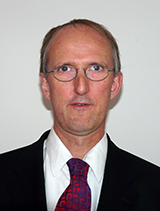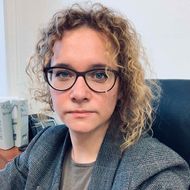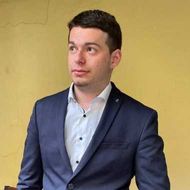- A
- A
- A
- АБB
- АБB
- АБB
- А
- А
- А
- А
- А
- Национальный исследовательский университет «Высшая школа экономики»
- Учебные подразделения
- Факультет социальных наук
- Департамент психологии
- Мероприятия
- Guest lecture "Neuroscience and neurorehabilitation of language: Theory – Experiment - Translation"
-
Подразделения
- Кафедры
-
Центры и лаборатории
-
- Центр фундаментальной и консультативной персонологии
- Центр социокультурных исследований
- Научно-учебная лаборатория психологии социального неравенства
- Научно-учебная лаборатория политико-психологических исследований
- Лаборатория языковых, межкультурных и творческих компетенций
- Международная лаборатория позитивной психологии личности и мотивации
- Научно-учебная лаборатория когнитивных исследований
- Научно-учебная лаборатория когнитивной психологии пользователя цифровых интерфейсов
- Научно-учебная группа «Психология организационной коммуникации»
- Научно-учебная группа «Психология среды»
- Научно-учебная лаборатория психологии способностей
- Научно-учебная лаборатория нейробиологических основ когнитивного развития
-
- Партнеры
-
Образование
- Бакалавриат
- Магистратура
- Аспирантура
- Школьникам
- Дополнительное образование
-
Департамент
Тел.: 8 (495) 772-95-90 *15366
E-mail: dekpsy@hse.ru
Фактический адрес: 101000, г. Москва, Армянский пер. 4, корп. 2
Почтовый адрес: 101000, г. Москва, ул. Мясницкая, д. 20 (департамент психологии)
Психология – одна из наиболее бурно развивающихся в настоящее время наук о человеке, включающая, с одной стороны, такие фундаментальные исследовательские направления, как общая психология и психология личности, социальная и кросскультурная психология, когнитивная психология и психофизиология, экономическая психология и психология принятия решения, а с другой – такие практико-ориентированные направления, как психологическая диагностика, индивидуальное и семейное психологическое консультирование, психоанализ, организационная психология. Все эти направления развиваются в департаменте ведущими российскими психологами, для которых выбор психологии стал выбором не только профессии, но и судьбы.
 Воздействие институциональных реформ в Российской Федерации на устранение условий для коррупции
Воздействие институциональных реформ в Российской Федерации на устранение условий для коррупции
Артеменко Е. А., Бурский И. Г., Крылова Д. В. и др.
М.: Издательский дом НИУ ВШЭ, 2024.
Куляпина А. М., Фам А. Х., Золотарева А. А.
Вопросы образования. 2024. № 1. С. 127-141.
В кн.: Социальные и клинические рубежи современной психиатрии и наркологии: сборник трудов всероссийской научно-практической конференции (г. Краснодар, 14 марта 2024 г.) / под общей редакцией: С.Н. Алексеенко, А.Н. Редько, В.Г. Косенко [и др.].. Краснодар: 2024. С. 79-82.
Liutsko L., Malova Y., Vinokurova E. et al.
public health and health services. 20944. MDPI, 2023

Guest lecture "Neuroscience and neurorehabilitation of language: Theory – Experiment - Translation"
HSE Centre for Cognition & Decision Making is pleased to invite you to a guest lecture by one of the world’s foremost experts in the neurobiology of speech and language
Neuroscience and neurorehabilitation of language:
Theory – Experiment - Translation
by Professor Friedemann Pulvermüller
Professor in the Neuroscience of Language and Pragmatics
Brain Language Laboratory, Freie Universität Berlin, Germany
 Date: 09.02.16
Date: 09.02.16
Time: 17.00
Address: Myasnitskaya street, 9/11
Room: 423
If you need a pass to the HSE, please contact Irina Badusheva via email: irina.baduseva@gmail.com
mobile +7 (977) 427-43-81
ABSTRACT: Advances in theoretical and experimental neuroscience have important implications for clinical practice. Brain research documented that the cortical mechanisms for language and action are tightly interwoven and, concurrently, new approaches to language therapy in neurological patients are being developed that implement language training in the context of relevant linguistic and non-linguistic actions, therefore taking advantage of the mutual connections of language and action systems in the brain. A further well-known neuroscience principle is that learning at the neuronal level is driven by correlation of neural activity; consequently, new approaches to language therapy emphasize massed practice in a short time, thus maximizing therapy quantity and frequency and, therefore, correlation at the behavioral and neuronal levels. Learned nonuse of unsuccessful actions plays a major role in the chronification of neurological deficits and behavioral approaches to therapy have therefore employed shaping and other learning techniques to counteract such nonuse. These insights from neuroscience combine to yield a new kind of therapy approach to post-stroke aphasia, called constraint-induced aphasia therapy or intensive language-action therapy (ILAT).
Whereas classical wisdom had been that post-stroke aphasia cannot be significantly improved at a chronic stage, a short intensive training interval (2 weeks, 2 hours/day) of ILAT yields significant improvement of language performance in patients with chronic aphasia, several years after their stroke. The method has recently been improved further by applying drug treatment in conjunction with the behavioral training. ILAT now appears as an efficient tool for improving language functions, even at chronic stages of aphasia. In future, we will aim to further optimize the method, strive to understand its underlying mechanisms and explore its perspectives with regard to a spectrum of communicative and cognitive deficits. My talk will focus on recent advances achieved with regard to the question which specific features of ILAT contribute to its effectiveness.
As a further benefit, ILAT as a rapid effective technique for language therapy in chronic post-stroke aphasia provides a unique tool for exploring the cortical reorganization of language independent of any spontaneous restitution processes. Therefore, therapy studies using this technique can open new perspectives for research into the plasticity of human language circuits.
1 Pulvermüller, F., & Fadiga, L. (2010). Active perception: Sensorimotor circuits as a cortical basis for language. Nature Reviews Neuroscience, 11(5), 351-360.
2 Pulvermüller, F., & Berthier, M. L. (2008). Aphasia therapy on a neuroscience basis. Aphasiology, 22(6), 563-599.
3 Berthier, M. L., & Pulvermüller, F. (2011). Neuroscience insights improve neurorehabilitation of post-stroke aphasia. Nature Reviews Neurology, 7(2), 86-97.
4 Pulvermüller, F., Neininger, B., Elbert, T., Mohr, B., Rockstroh, B., Koebbel, P., & Taub, E. (2001). Constraint-induced therapy of chronic aphasia following stroke. Stroke, 32(7), 1621-1626.
5 Berthier, M. L., Green, C., Lara, J. P., Higueras, C., Barbancho, M. A., Davila, G., & Pulvermuller, F. (2009). Memantine and constraint-induced aphasia therapy in chronic poststroke aphasia. Annals of Neurology, 65(5), 577-585.
6 DiFrancesco, S., Pulvermüller, F., & Mohr, B. (2012). Intensive language action therapy: the methods. Aphasiology, 26(11), 1317-1351.- О ВЫШКЕ
- Цифры и факты
- Руководство и структура
- Преподаватели и сотрудники
- Корпуса и общежития
- Закупки
- Обращения граждан в НИУ ВШЭ
- Фонд целевого капитала
- Противодействие коррупции
- Сведения о доходах, расходах, об имуществе и обязательствах имущественного характера
- Сведения об образовательной организации
- Людям с ограниченными возможностями здоровья
- Единая платежная страница
- Работа в Вышке
- ОБРАЗОВАНИЕ
- Лицей
- Довузовская подготовка
- Олимпиады
- Прием в бакалавриат
- Вышка+
- Прием в магистратуру
- Аспирантура
- Дополнительное образование
- Центр развития карьеры
- Бизнес-инкубатор ВШЭ
-
http://www.minobrnauki.gov.ru/
Министерство науки и высшего образования РФ
-
https://edu.gov.ru/
Министерство просвещения РФ
-
http://www.edu.ru
Федеральный портал «Российское образование»
-
https://elearning.hse.ru/mooc
Массовые открытые онлайн-курсы
- © НИУ ВШЭ 1993–2024 Адреса и контакты Условия использования материалов Политика конфиденциальности Карта сайта
- Редактору


